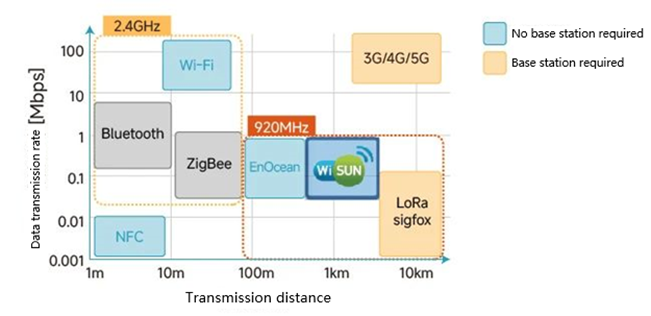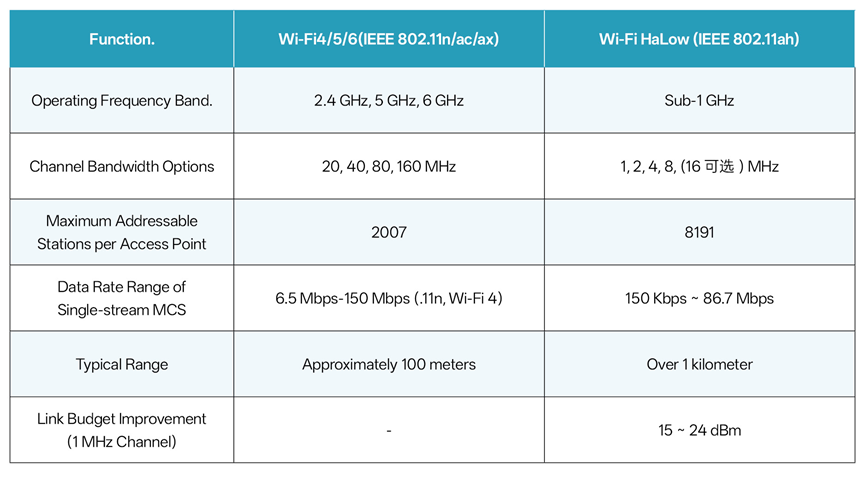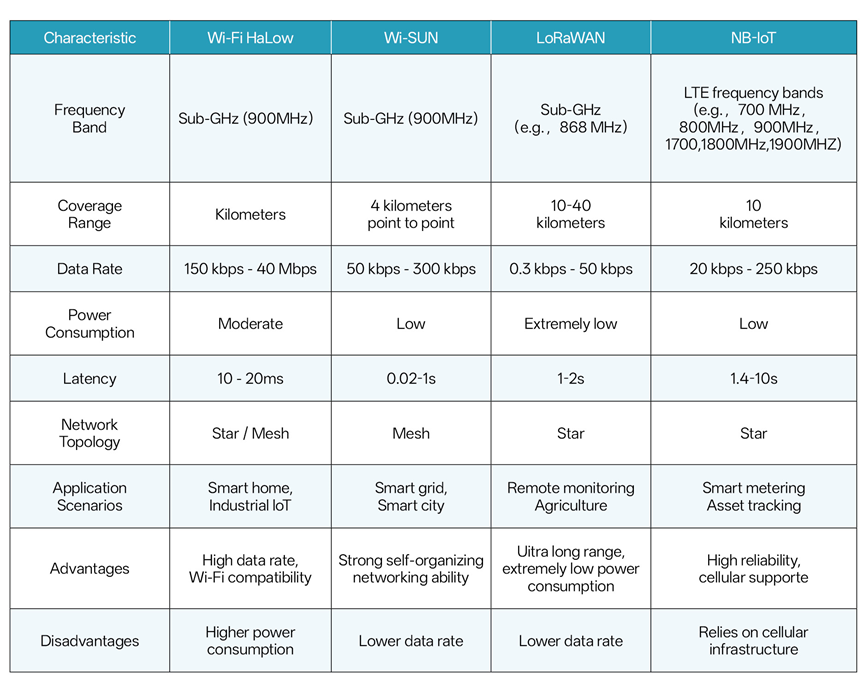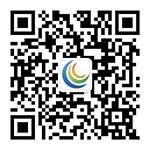Communication technology on Sub-GHz frequency: Leading Long-Distance and Wide-Coverage Connectivity Applications
Introduction: On March 18th, Vantron Technology, an IoT provider, launched the world's first Wi-Fi HaLow USB adapter, VT-USB-AH-8108, at the Embedded World Conference in Nuremberg, Germany. Driven by MorseMicro's MM8108 chipset, it can be integrated into existing infrastructures such as Wi-Fi APs. With the plug-and-play feature, it can provide a connection speed of up to 43Mbps and is scheduled to be launched in the second quarter of 2025.

Above picture: The VT-USB-AH-8108 adapter produced by Vantron for Wi-Fi HaLow connection.
The VT-USB-AH-8108 adapter produced by Vantron for Wi-Fi HaLow connection.
IoT communication technologies can be classified according to three aspects: transmission distance, power consumption, and data rate:
1.Transmission distance: Short-range (Bluetooth/Zigbee/WiFi, for smart home) → Medium-range (LoRa/Sigfox, for agricultural monitoring) → Long-range (cellular/satellite, for wide-area monitoring);
2.Power consumption: High-power consumption (WiFi/cellular require continuous power supply) → Low-power consumption (Bluetooth/LoRa can work for several years);
3.Data rate: High-speed (5G NR/WiFi6/WiFi7 for video transmission) → Medium and low-speed (NB-IoT for smart meters).
From the perspective of whether it is connected to a cellular network, it can also be divided into cellular and non-cellular communication technology applications. Cellular IoT (such as 4G/5G/NB-IoT) features strong coverage, high data rate, and high reliability, but has high power consumption and costs, and is suitable for real-time scenarios such as vehicle networking and telemedicine. Non-cellular IoT (such as LoRa/Zigbee) has the advantages of ultra-low power consumption, low cost, and massive connections, but its coverage and data rate are limited, and it is suitable for low-frequency demand scenarios such as agricultural sensing and meters. The cellular and non-cellular technology complement each other and coexist. Cellular technology focuses on wide-area and high reliability, while non-cellular technology focuses on local and low cost, they combine to build a complete IoT ecosystem.
Today, with the rapid development of the Internet of Things (IoT), the demand for connectivity is no longer limited to scenarios with high data rates and low latency. For applications such as smart cities, environmental monitoring, and agricultural IoT, medium and low data rate connection technologies with long-distance, wide-coverage, low-power consumption, and low cost are the key. The Sub-GHz frequency band, with its excellent characteristics, is becoming the ideal choice for these applications. This article will focus on three IoT technologies based on the Sub-GHz frequency band: LoRa, Wi-SUN, and WiFi HaLow, and explore how they empower future IoT applications.

I. Advantages of the Sub-GHz Frequency Band
The Sub-GHz frequency band generally refers to the wireless communication frequency band with a frequency lower than 1GHz, such as 433MHz, 868MHz, 915MHz, etc. Compared with high-frequency bands such as 2.4GHz, the Sub-GHz frequency band has the following advantages:
Long distance: With a longer wavelength, it has strong diffraction ability and can penetrate obstacles such as walls and buildings, achieving a longer communication distance.
Wide coverage: A single base station can cover a larger area, reducing the infrastructure deployment cost.
Low power consumption: It requires less energy to transmit the same amount of data, extending the battery life of devices.
Strong anti-interference ability: Compared with the crowded 2.4GHz frequency band, the Sub-GHz frequency band has less interference and more stable communication.
II. LoRa: The Leader of Low-Power Wide-Area Networks (LPWAN)
LoRa (Long Range) is an LPWAN protocol based on spread spectrum technology, on the Sub-GHz frequency band, with the characteristics of ultra-long distance and ultra-low power consumption. Its advantages include:
Ultra-long communication distance: It can reach dozens of kilometers under line-of-sight conditions and several kilometers in urban environments.
Ultra-low power consumption: Battery-powered devices can operate for several years or even more than a decade.
Large capacity: A single gateway can connect thousands of access points
Low cost: Chips and modules are inexpensive, making it easy for large-scale deployment.
LoRa is widely used in fields such as smart metering, environmental monitoring, asset tracking, and smart agriculture.
III. Wi-SUN: The Foundation for Building Smart Cities and Smart Grids
Wi-SUN (Wireless Smart Utility Network) is a wireless communication protocol based on the IEEE 802.15.4g standard, mainly operating in the Sub-GHz frequency band, with features such as self-organizing networking, multi-hop transmission, and high reliability. Its advantages are as follows:
Self-organizing networking ability: Nodes can automatically form a network without manual intervention, and network deployment is flexible and convenient.
Multi-hop transmission: Data can be relayed through multiple nodes, expanding the network coverage.
High reliability: Using a Mesh network structure with path redundancy, the network has high reliability.
Strong security: It supports multiple encryption algorithms to ensure the security of data transmission.
Wi-SUN is widely used in fields such as smart grids, smart cities, and smart homes.
IV. WiFi HaLow: The Rising Star of WiFi in the Sub-GHz Frequency Band
WiFi HaLow (IEEE 802.11ah) is a wireless communication standard for IoT applications launched by the WiFi Alliance, on the Sub-GHz frequency band, with characteristics such as long distance, low power consumption, and high capacity. Its advantages include:
Compatibility with WiFi: It is compatible with existing WiFi devices, making it easy to integrate and apply.
Long-distance transmission: The communication distance can reach 1 kilometer, which is 10 times that of traditional WiFi.
Low power consumption: It adopts an energy-saving mechanism to extend the battery life of devices.
High capacity: It supports a large number of devices to connect simultaneously.
WiFi HaLow can be applied to fields such as smart homes, industrial IoT, and smart retail.

V. Summary and Prospects
LoRa, Wi-SUN, and WiFi HaLow each have their own advantages and can meet the needs of different application scenarios. With the continuous deepening of IoT applications, these technologies will play an increasingly important role and promote the development of the IoT in a broader and deeper direction. In the future, we can expect to see more innovative applications based on the Sub-GHz frequency band, contributing to the construction of a smart world connected everything.
It should be noted that each technology has its applicable scenarios and limitations. In practical applications, it is necessary to make selections according to specific requirements. For example, LoRa is more suitable for application scenarios with low power consumption, long distance, and small data volume, while WiFi HaLow is more suitable for application scenarios that require a higher data transmission rate and low latency.

KCT810xL series products on the Sub-GHz frequency band launched by KXcomtech have achieved an excellent balance among high power, high linearity, and low power consumption, enabling them to extend the battery life of devices while ensuring communication quality. This is great significance for devices in smart cities and smart industries that require long-term stable operation. The KCT810xL series products support multiple mainstream IoT communication protocols, including LP-WAN (LoRa, Sigfox, etc.), WiFi Halow, and Wi-SUN, enhancing their competitiveness in the IoT market. Their performance in the sub-GHz frequency band further improves their availability in a wide range of application scenarios, especially in applications that require low power consumption and long-distance communication, where they have a competitive edge. In October 2024, KCT8103L product of KXcomtech won the "IoT Innovation Product of the Year" award at the 11th China IoT Conference 2024 jointly hosted by Elecfans and electronica South China. This product is designed for IoT applications in the 860MHz - 930MHz ISM frequency band, integrating a power amplifier, a low-noise amplifier, and a single-pole double-throw switch. It is widely used in fields such as smart water meters, smart electricity meters, smart cities, and smart industries. KCT8103L has successfully cooperated with MorseMicro's MM6108 reference design and been smoothly introduced into the Wi-Fi Halow platform, demonstrating high performance and high reliability in TDD mode to meet kinds of requirements of IOT devices. KCT8102L has also performed outstandingly in the IoT field. As a radio frequency front-end chip specifically designed for the sub-GHz frequency band, through cooperation with Unicomsemi (TingTong) on the WiSUN protocol and certifications, KCT8102L provides stable communication guarantees for devices such as smart water meters and electricity meters, further enriching KXcomtech's product roadmap in the IoT field.

 Chinese
Chinese English
English